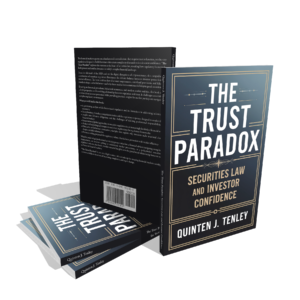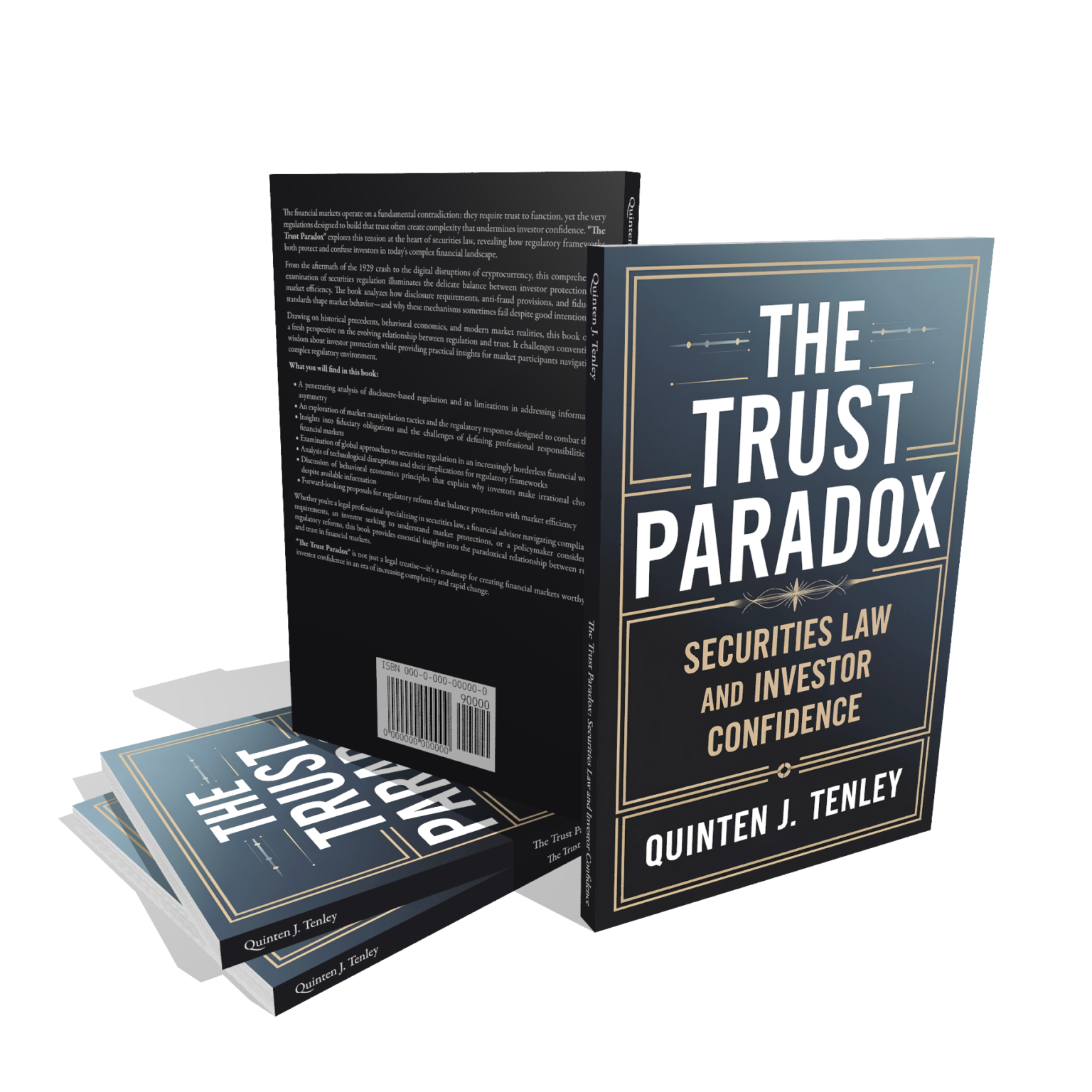The Trust Paradox Securities Law and Investor Confidence – Complete Guide to Financial Market Regulation

Understanding securities law and investor confidence has never been more critical for today’s financial professionals and investors. Modern financial markets face an unprecedented challenge where the very regulations designed to protect investors can sometimes undermine the trust they seek to build. This comprehensive analysis reveals how regulatory complexity creates barriers to market efficiency while exploring practical solutions for enhancing investor protection.
“The Trust Paradox: Securities Law and Investor Confidence” offers groundbreaking insights into behavioral economics, disclosure requirements, and enforcement mechanisms that shape today’s investment landscape. Unlike traditional legal texts, this ebook bridges theory and practice, making complex regulatory concepts accessible to professionals, students, and informed investors seeking to navigate modern market dynamics.
What You’ll Discover
- Behavioral Economics Impact: Learn how cognitive biases and emotional decision-making affect investor behavior despite robust disclosure requirements and market safeguards
- Disclosure Paradox Solutions: Discover why information overload undermines informed decision-making and explore innovative approaches to meaningful investor communication
- Technology and Regulation: Master the challenges that digital trading platforms, blockchain technology, and social media create for traditional securities law frameworks
- Enforcement Effectiveness: Overcome misconceptions about regulatory accountability by understanding how SEC actions, private litigation, and industry oversight actually function in practice
- Global Regulatory Trends: Navigate international compliance challenges and cross-border investment risks in today’s interconnected financial markets
- Reform Implementation: Transform your understanding of practical reforms that balance investor protection with market efficiency and innovation
Why This Book Matters
Financial market regulation stands at a crossroads where traditional approaches struggle to address modern challenges. This comprehensive analysis transforms complex legal theories into actionable insights for investment professionals, compliance officers, and market participants. The book’s unique approach combines academic rigor with practical application, revealing how behavioral economics research exposes fundamental flaws in disclosure-based regulation.
Whether you’re managing regulatory compliance, making investment decisions, or developing financial products, this resource provides essential knowledge for navigating today’s complex regulatory environment. The immediate practical application includes understanding how market psychology affects regulatory effectiveness and implementing strategies that build genuine investor confidence.
Key Features
This comprehensive ebook spans multiple chapters covering disclosure requirements, enforcement mechanisms, behavioral economics applications, and technology integration challenges. Available as an instant digital download, you’ll receive immediate access to detailed case studies, regulatory analysis frameworks, and practical implementation guides. The format allows for easy reading on any device, with printable reference materials for hands-on application. Also available as audiobook on Google Play Books and Spotify for convenient listening during commutes or workout sessions.
Frequently Asked Questions
How does this book address modern securities law enforcement challenges?
The book provides comprehensive analysis of multi-layered enforcement mechanisms including SEC administrative proceedings, civil court actions, criminal prosecutions, and private litigation. It examines recent Supreme Court decisions affecting regulatory authority and explores innovative approaches like the SEC whistleblower program for overcoming organizational barriers to reporting misconduct.
What makes this securities law analysis different from traditional legal textbooks?
Unlike academic texts focused purely on legal doctrine, this book integrates behavioral economics research to explain why disclosure-based regulation often fails. It addresses real-world implementation challenges and offers practical reform proposals that acknowledge human cognitive limitations while maintaining investor protection standards.
Does the book cover how technology impacts securities regulation?
Yes, it thoroughly examines how digital trading platforms, blockchain technology, high-frequency trading, and social media have disrupted traditional regulatory frameworks. The analysis includes regulatory responses to these innovations and explores how emerging technologies create both challenges and opportunities for market oversight.
Get Your Copy Today
Transform your understanding of securities law and investor confidence with this comprehensive guide. Available for instant download at just $6.99, this ebook provides exceptional value compared to expensive legal courses or regulatory workshops. Also available as audiobook on Google Play Books and Spotify for convenient learning. Purchase your copy through all major ebook retailers including Apple Books, Barnes & Noble, and Kobo to begin mastering financial market regulation today.
Watch the Video Review

